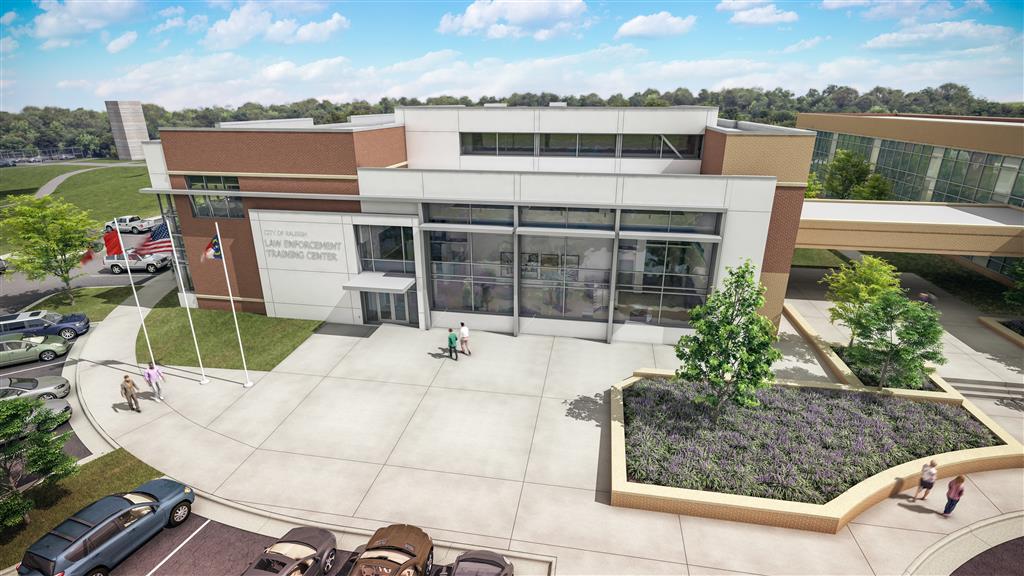Through Interdisciplinary Collaboration, Moseley Architects’ Engineers Turn Mechanical Designs Into Masterpieces

Creativity isn’t a word you might expect to be associated with mechanical engineering (so much as, say, product design or advertising). But with the latest palette of advancements at costs that have made their way down to mainstream, the field is now more than just a science; it’s an artform.
“First, you just have to open yourself up to the data,” says Josh Landis, senior plumbing engineer at Moseley Architects. “As the information comes in, and you’re gaining new insights, you kind of piece it together and work to find the right pathway.”
The process sounds as much Zen as it does engineering, but, “You don’t want to look at it with blinders, or just home in on one way and stick with it,” Landis says. “You want to be open to, ‘What if we do this here?’ and ‘What if we do that there?’”
Add to that a client who understands the benefits for things like geothermal wells and building automation systems (BAS), and suddenly engineers find all of their neural networks firing.
“To date, this has been one of my favorite projects,” says Cary Sorah, one of Moseley Architects’ mechanical engineers, regarding the Raleigh Law Enforcement Training Center project. “We knew early on that the city of Raleigh is very focused on energy savings. That allowed me and the rest of our engineering team and designers to be creative with energy saving strategies that we’re not always able to use.”
For engineers, the results represent an interdisciplinary symphony—an array of high-tech heating, cooling, ventilating and plumbing components, all collaborating and sharing energy sources to eke out every possible saving. By working with the firm’s architects and designers, engineers designed plans for a 60,000-square-foot, steel-framed building that draws on geothermal wells and 51 above ceiling-mounted, ground-source heat pumps for heating and cooling. Sorah incorporated variable speed equipment, advanced LED lighting and a BAS with web-based digital controls.
“This is definitely a more unique system—something that you don’t see as often,” she says. “Every single multi-occupant space has its own temperature control and then 50% of the offices have individual controls as well.”
On the geothermal side, the team performed lifecycle cost analysis to determine which system would provide the best payback. A bore field is designed of 82 ground wells—each 400 feet deep—while two additional wells provide real-time data about ground temperatures, so the system can automatically adjust for efficiency. Not only will the wells fuel heating and cooling, but the system also produces water that’s 130 degrees F, leaving just a 10-degree deficit for electric domestic water heaters.
Heat pumps circulate outside air and exhaust through energy recovery units; occupancy sensors not only deactivate lights, but automatically adjust temperatures in areas that are empty; carbon dioxide sensors measure and reduce outside air intake to save energy.
Overall, the design adds a mere $8 per square foot, while producing 30% cost savings when compared to a typical, ASHRAE 90.1 Baseline system. It’s expected to produce a total of $78,737 in lifecycle cost savings over a 20-year period.
“The key is not to have a micro mindset as an engineer,” Landis says. “The nice thing about Moseley is that all of the disciplines are under one roof. You’re looking at each project as a whole.”
By gathering around tables and connecting with their peers through software platforms, engineers and designers at Moseley Architects are able to collaborate in real time, Landis says, rather than waiting for an exchange of ideas across companies and agencies. “Sometimes it’s a matter of seconds to bounce ideas off of your collaborators,” he says. Meanwhile, “Because you aren’t waiting on those things, you have more time to hash out ideas that touch all disciplines,” he adds.
Hailing from a background of embassy projects and mission critical government work, Landis brought a critical eye to the Raleigh Law Enforcement Training Center project—one that helped guide the client away from an idea that could have been a mistake. With an existing 15,000-gallon water tank on site, city officials inquired about putting their prior investment to work in order to capture and use rainwater. But when a review of the location’s climate, total roof space and expected water usage showed that the plan would end up costing the city more, while also adding risks for water shortages, Landis was able to steer them to a better option: reclaimed city water. A nearby secondary source provides water that isn’t potable but can be used as “makeup water” for such things as cooling towers and flushing toilets. Landis engineered two fully independent hydraulic circuits into the plan to eliminate the possibility of cross contamination. Meanwhile, Moseley Architects’ interior designers specified colors and finishes that will prevent staining.
Based on his expertise, Landis also knew that it was imperative to specify measures like piston-style valves and the ability to shut down individual fixtures, while leaving others still operative. “It gives operational resiliency,” he says. “You get the security of not having to shut down an entire circuit or system and create a huge inconvenience if one tiny pebble comes through the secondary water supply.”
Ultimately, those features will save the city a total of around $11,000 per year—including systems maintenance and repairs.
“It’s about making wise decisions up front,” Sorah says. “We aren’t focusing on just today and current needs. We want to leave the client with a building that’s going to serve them well over time.”
Crowning the project’s mechanical design is a roof that’s prepped for the addition of photovoltaic panels—eventually bringing it to net-zero energy usage.
“It’s good for the client and good for the environment, so we’re excited about any project that can achieve this level of efficiency,” Sorah concludes.